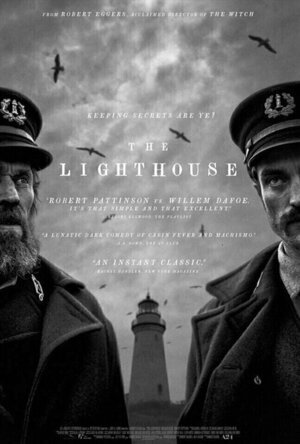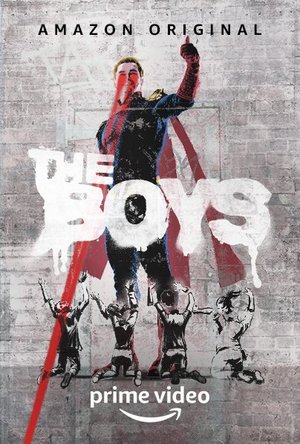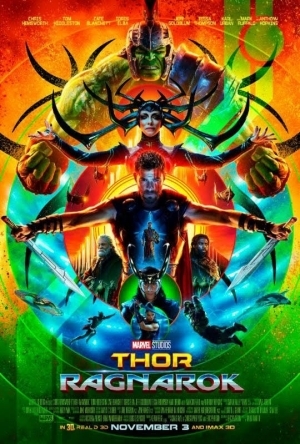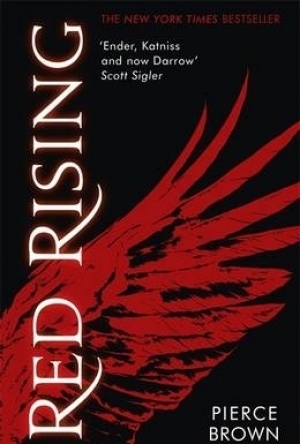Neon's Nerd Nexus (360 KP) rated The Lighthouse (2019) in Movies
Mar 2, 2020
Filmed in Canada, and starring New Zealand actors Karl Urban and American Gothic’s Antony Starr, this violent and very adult take on the costumed hero mythology is enough removed from standard American sensibilities to allow it to explore itself boldly and largely uncensored. It is definitely not a show for kids!
From the opening scenes it is evident that The Boys is not afraid to use gallons of blood and gore, nudity and colourful language to emphasise its point of a world corrupt, corporate and cruel, where the falacy of the powerful being there to protect you is shown up as pure money-spinning political and media manipulation.
We follow Jack Quaid’s naive victim Hughie Cambell, as he comes to realise the true nature of the self-centred and entirely flawed “heroes” that make up The Seven – an elite collection of super-powered “freaks”, led by Starr’s superbly vain and ego-maniachal Homelander; yet ultimately controlled by the Vought corporation and its unethical CEO Madelyn Stillwell, played with nervy relish by Elizabeth Shue.
There is Translucent, who can turn his skin invisible, but has to be naked to do so, and uses it largely to lurk in women’s bathrooms… The Deep, who can speak to sea creatures, but manifests a poisonous macho air, driven by massive insecurity… and A-Train, the world’s fastest man, who is a self-serving junkie with big issues.
Into the mix comes, the newest member of The Seven, Erin Moriaty, as Annie January, aka Starlight. Who may or may not have what it takes to join the ranks of well publicised fame, if she can turn a blind eye to the sinister workings of Vought and fit in.
Meanwhile, Hughie, looking for justice and perhaps revenge, meets Will Butcher (Urban), a man with a shady past, a terrible London accent (hilariously brought to attention whenever possible), and a reason to despise and hunt The Seven to extinction. The narrative progresses through this hunt, and the revelation of many secrets, into a cat and mouse game between the powerful “heroes” and the mere mortals determined to stop them.
Arch humour presides; nothing is handled with any sense of realism, favouring spectacle over believability. The tongue is firmly in cheek throughout, and the fun comes from the inventive ways the “Supes” use and misuse their powers, versus the resourcefulness of the essentially powerless methods employed by The Boys to chase them down and bring them to justice.
There are moments when the idea overshadows the actual script, for sure. Other times when the density of characters becomes confusing and unfocused. Without spoilers, it does all go in some very interesting directions, and by the end of episode 8 and the season finale it reaches a point suggesting a tactic many new shows seem to favour. Namely, to leaves things open enough, and on a cliff edge enough, to lead it anywhere it wants to go in a second series.
I have to admit, I wasn’t always comfortable with the tone of it… but, perhaps, that is the point. I did, however, find it very entertaining, fascinatingly post-modern and allegorical. As with many of the “Supes” it could have the ability to fly… but isn’t quite there yet!

SkySafari 4 Plus: Map the Universe! Discover Sun, Moon, Mars, Stars, Planets, and Satellites with your telescope and NASA space missions!
Reference and Education
App
***SkySafari has been upgraded! For more information on the NEW SkySafari 5 Plus for iOS, visit...

The Art of Losing by The Anchoress
Album
AWARD-WINNING WELSH MULTI-INSTRUMENTALIST THE ANCHORESS RETURNS WITH HER CRITICALLY ACCLAIMED SECOND...

Gaia GPS - Hike, Hunt, Offroad
Navigation and Travel
App
Plan trips and stay safer in the woods, with Gaia GPS. Used by hundreds of thousands of...

Gaia GPS Classic
Navigation and Travel
App
►► WARNING - DOWNLOAD THE NEW APP INSTEAD Instead of buying this app (Gaia GPS Classic), please...
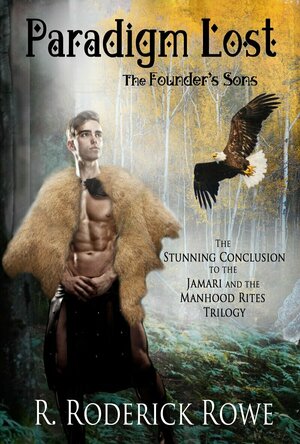
Paradigm Lost: Jamari and the Manhood Rites: The Founder's Sons: Part 3
Book
A forest paradise surrounded by lands gutted from corporate greed. The Elk Creek Tribe holds the...
Dystopian Fantasy Futuristic
Lee (2222 KP) rated Thor: Ragnarok (2017) in Movies
Oct 27, 2017
Since then, the appeal of Thor (aside from his obvious appeal to the ladies) has grown considerably via his other appearances within the Marvel Cinematic Universe. His humourous side began to show a lot more. Ragnarok just takes that side of him to a whole other level, delivering the funniest most ridiculous Marvel movie to date. And it's a joyous blast!
Things start as they mean to go on, with Thor dangling in chains before giant fire demon Surtur, constantly interrupting his monologue as he waffles on about destroying Asgard. Thor soon escapes, defeating a huge army and killing a dragon creature in an impressive battle sequence. Then, it's back to Asgard for a little bit of Loki mischief, down to Earth for a brief but hilarious meeting with one of the newest additions to the MCU, followed by a trip to Norway! And then it's time to introduce us to the big bad of the movie, banished sister of Thor and Loki, Hela the goddess of death (Cate Blanchett), who has returned to claim the throne of Asgard. It's no secret, if you've seen the trailer, that she's powerful enough to destroy Mjolnir, so when she does, Thor and Loki both know she means business. Hela banishes Thor to Sakaar, and that's where the crazy really kicks in. Captured by a Valkyrie from Asgard, Thor is transported to the fighting pits where he is set to meet the Grandmaster (Jeff Goldblum) and fight against his champion in the main event. It's at this point that we also meet Korg, a rock gladiator voiced by Taika Waititi himself, who manages to deliver many of the films funniest lines in a softly spoken Kiwi accent.
Again, if you've seen the trailer then you've already at this point got a pretty good idea who the champion gladiator is going to be. And the "He's a friend from work" line sums up just how much fun this entire scene is. Watching from the sidelines is Loki, and his reaction upon seeing Hulk, along with his reaction to the whole magnificent fight sequence, is hilarious. But, the one thing on Thor's mind is to get back to Asgard and stop Hela. And his plan involves eventually recruiting Hulk, the Valkyrie who captured him, and even Loki, to form a brand new team called 'The Revengers'!
Along with Thor, this is also the best use of Hulk within a Marvel movie so far. He has plenty more to say this time round, and with a wider range of emotions too. Most of the time though this involves being sulky and moody, and complaining about everyone on Earth thinking he's the stupidest Avenger. The banter between Thor and Hulk throughout the entire movie is just brilliant.
I tend to judge my Marvel movies on how often I catch myself gazing at the screen with a wide-eyed, slack-jawed geeky grin on my face and there were a lot of those moments during Ragnarok, especially during the final scenes. I can't remember the last time I had this much fun watching a Marvel movie!
Hazel (1853 KP) rated Red Rising in Books
May 30, 2017
Red Rising by debut author Pierce Brown is a very difficult book to review. It is clear that Brown is an excellent writer with amazing ideas, but at the same time it does not feel possible to rate the book any higher that two or three stars. This first book of three is somewhat alike The Hunger Games Trilogy by Suzanne Collins and has some very exciting themes. However at other times it provoked a range of emotions from disgust to almost verging on boredom.
Set thousands of years in the future, the world has become colour coded. Gold are the elite, the ruling colour, and at the bottom of the pile are the Reds. Darrow is a Red and lives below the surface of the planet Mars in the mines with the responsibility of helping to make the planet’s surface habitable for humans in the future. He soon discovers that the ruling societies have been lying to him all his life, and to the many generations before him. But there is an uprising brewing and Darrow has been chosen to play a vital role in it, even though that means pretending to be the enemy.
Although it was difficult to get into the novel it appeared to be clear what the plot would be about. Wrong! Once Darrow has been trained to behave like a Gold the storyline changes completely. It is almost as though it is a different book altogether. Red Rising suddenly becomes Hunger Games-esque and the situations with the Reds, while being referred to once or twice, was all but forgotten. Presumably those original themes will continue within the final books of the trilogy.
Living under the surface of Mars with no sunlight speeds up the aging process of the inhabitants. People in the thirties are considered old; therefore even though Darrow is a teenager in Earth years, he is portrayed as a man – an image that is difficult to shake off throughout the entire book. Once Darrow is living with the Golds and, supposedly, resembling his true age, it is still easy to forget that he is young. This may change the way the reader pictures the scenes compared with how the author intended them to be imagined. The characters are still only children but may be mistaken for adults due Darrow’s opening scenes.
It cannot be denied that Brown is a very knowledgeable writer. As well as writing in an exceptionally well-structured way, he incorporates a vast amount of high culture into his story. A lot of the novel is influenced by Greek and Roman mythology and he also quotes famous philosophers such as Cicero and Plato. So despite its science fiction genre it also has a slight educational nature.
Something interesting about Red Rising was the character development of Darrow. At the beginning he was rather naïve, believing everything he was told, following orders etc. But soon he becomes more confident, clever, Gold-like. However he then becomes like a wild beast, killing to survive, to win. Thankfully his cleverness takes control and he realises that he needs to become a leader and not a tyrant. Towards the end he even becomes messiah-like. As Darrow progresses through these changes he becomes a more likable character.
I am not sure whether I want to read the next installment of Red Rising. For the beginning storyline to continue and become the main focus, the book would need to be completely different. This could be a good thing because, as mentioned, there were times when it was a little boring, however there’s the risk that it will not feel like a follow on from the first book. I do not want to put anyone off from reading it, but I will honestly say that it was not really what I was expecting.
Acanthea Grimscythe (300 KP) rated Highwayman in Books
May 16, 2018
In the wake of a plane crash, Karl Goodman finds himself in-between life and death - a sort of limbo that I felt was reminiscent of an episode of Supernatural where Castiel and Dean are fighting vampires in purgatory. I say this largely because of the whole Fog-World/forest atmosphere. In this surreal world, a murderer from centuries past is able to cross the lines between the worlds of the living and dead to continue visiting his reign of horror upon unsuspecting individuals. Guided by the Deans, who appear to be a set of reapers, for lack of a better term (or maybe ferrymen), and a young, comatose girl named Imke, Karl finds himself seeking out this murderous highwayman so that he can exact revenge for his daughter's death.
While I have a strong love for the supernatural and paranormal, I couldn't help but find myself confused more often than not by several aspects of the story. I am, admittedly, ignorant of the White Hart and the Green Man, but I like to think I'm a bit more versed in the many varieties of spooks. In fact, Saunders portrayal of a barrow-wight did not stray unreasonably far from its native draugr. What does baffle me though is how Saunders introduces these supernatural elements into his book. When I received Highwayman, I was expecting something dark and macabre that dealt with... well, with highwaymen. The main villain of the tale is precisely that, but the book itself is largely a ghost story. That isn't necessarily a problem, but it simply did not sit very well with me.
To further complicate the telling of the story, there are far too many differing points of view - five or six, total. (I can't remember if there was a part told from Mr. Dean's perspective.) This makes it hard to keep track of the passage of time, and whether or not that is intentional, I found it bothersome. For instance, at one point Bethany, Karl's wife, does something. Then, for several chapters, the story does not return to her. In fact, the disparity between returning to her point of view was so great that I actually thought that Saunders had forgotten about her.
One of the other issues that bothered me was the circumstances of Karl and Bethany's daughter's death. At first it is explained as a drowning, but then later we learn it was not. Apparently her murder was so horrid that Karl conveniently blocked the tragedy from his mind with a far more "rational" explanation, and to me this felt more like slapping a bandaid on a forgotten plot element than something that was done naturally.
At no point during my reading of this book did I feel any sort of emotion or attachment to any of the characters, and I found that to be extremely disappointing. The cast of Highwayman are not, in any way, extraordinary (well, not depth wise), and that made it harder for me to get into the book.
Overall, I didn't care much for Highwayman; however I will not let that discourage me from reading more of Saunders' work in the future. As part of the DarkFuse Reader's Group, I received an advance copy of this book in exchange for an honest review. I would like to thank DarkFuse, Craig Saunders, and NetGalley for this opportunity.
